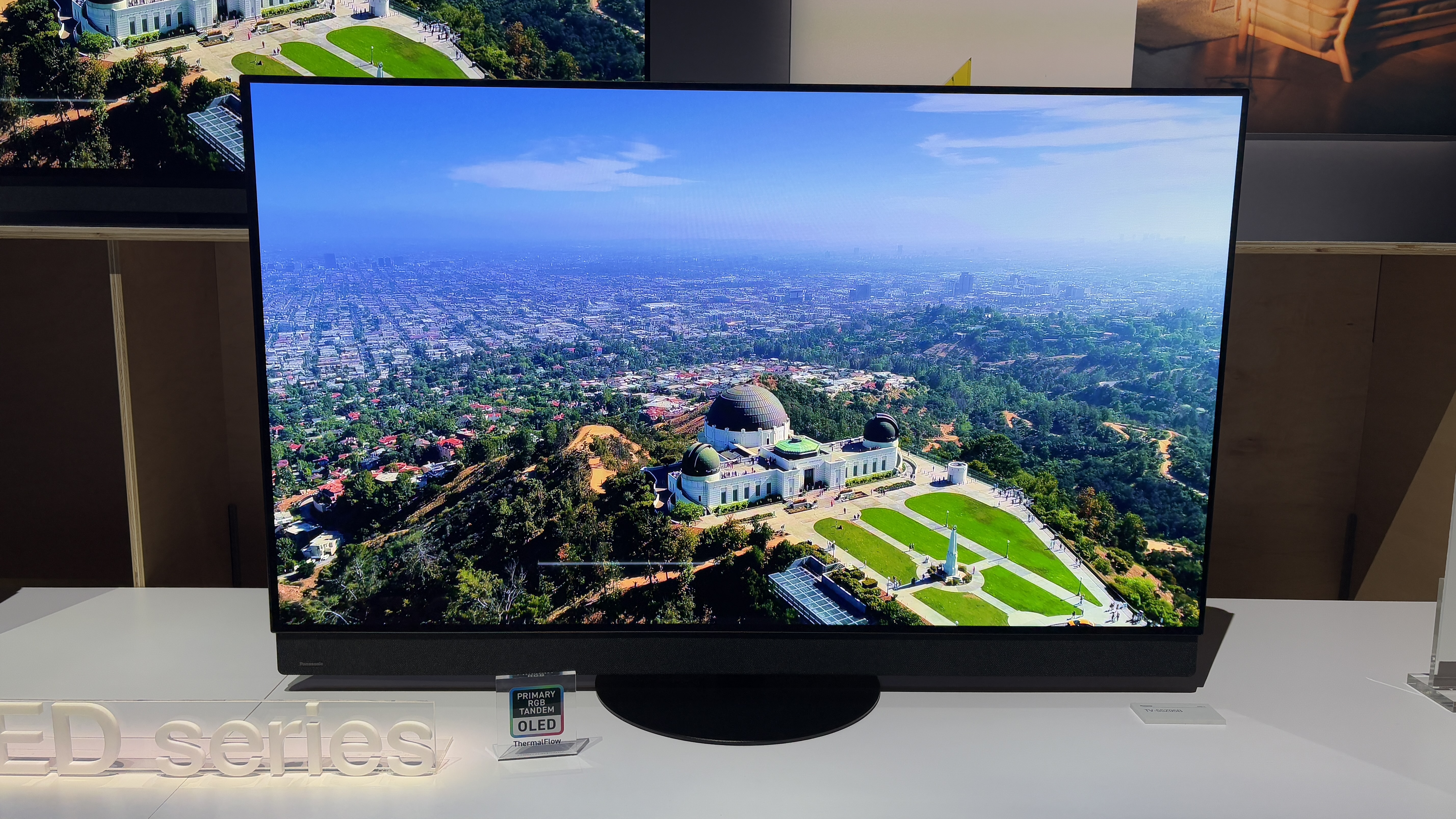I’ve had a sneak peek at some of 2025's biggest next-generation OLEDs – and they're a huge step up
Sorry MLA, your time in the spotlight is over...

We’re just over a month into 2025, and it’s already proving to be a pivotal year for TVs. The year started with a bang when, just a week in, LG dropped the bombshell that Micro Lens Array (MLA) was being dropped with immediate effect, and a new OLED panel technology would be replacing it.
But why was this so surprising? The brightness-boosting tech that utilised a layer of millions of microscopic lenses to focus the light from the white OLED layer was only in its second generation, and we anticipated that it would develop further and even be featured in step-down lines of TVs such as LG’s C-series OLEDs. We awarded it the coveted Innovation of the Year title at our 2023 Awards, so seeing it replaced so quickly was not on our bingo sheet.
The good news is that LG Display, which manufactures a majority of OLED panels and developed MLA OLED, had a trick up its sleeve. Primary RGB Tandem OLED serves as a successor to MLA OLED, and while the name is certainly a mouthful, its performance is a sight to behold. A handful of TV manufacturers – LG, Panasonic and Philips to be exact – have already debuted TVs that utilise this next-generation OLED panel technology, and I’ve had the privilege of being among the first in the world to see their new flagship sets.
These TVs include the LG G5, Panasonic Z95B, Philips OLED910 and Philips OLED950. Between jet-setting to Las Vegas and Barcelona to see these impressive flagship TVs in person, I’ve come to a realisation; while I was initially shocked to see MLA exit the market so quickly, I won’t miss it.
While I recognise that each of the aforementioned TVs requires the thorough testing process that we use for all TVs that we review, I’m already seeing the benefits of Primary RGB Tandem OLED; that being improved brightness and enhanced colour volume. Surprisingly, the latter improvement has been my favourite aspect of the panel technology thus far, as it’s addressed my main issue with MLA OLED.
Don’t get me wrong, we saw some truly impressive MLA OLED TVs such as the Panasonic Z95A and LG G4, however, I couldn’t shake the feeling that the enhanced white light was impacting colour volume on many of these sets. In my opinion, colours tended to appear more blue/cool than I preferred – an issue that rival panel technology QD-OLED, developed by Samsung Display, doesn’t tend to suffer with in my experience.
Primary Tandem RGB OLED, on the other hand, appears to produce richer and warmer colours based on the brief demos I’ve had of the sets that sport the technology. I shouldn’t understate the brightness benefits too, as they are noticeable with highlights; a demo comparing the MLA-equipped Philips OLED959 and Primary RGB Tandem OLED Philips OLED950 with fireworks against a black night sky was particularly useful, as the pops of white light from the fireworks had noticeably more punch on the newer panel. Signs are pointing toward a 200-nit peak brightness increase, with a figure of 3700 nits quoted by Philips.
The latest hi-fi, home cinema and tech news, reviews, buying advice and deals, direct to your inbox.
Speaking with Danny Tack (Philips’ Senior Director of Product Strategy and Planning), he put the transition from MLA to Primary RGB Tandem OLED into perspective like this: “It’s really a win-win with this panel,” he said, and highlighted the benefits of full white and peak brightness, a wider colour gamut covering 99.5 per cent of the DCI-P3 spectrum, and 20 per cent less power consumption. That final point really seals the deal in my mind, as all of these upgrades somehow come packaged with enhanced efficiency.
I’m eager to see these highly anticipated OLED TVs flex their muscles in our AV testing room when they launch later in the year, and while that will undoubtedly require us to fire up the superbly bright (and critical and commercial flop) Pan to assess these big brightness claims, I’m also keen to see how they present some of our other favourite reference discs.
MORE:
Read our LG G5 hands on review
As well as our Philips OLED910 hands on review
And check out our picks for the best OLED TVs
Lewis Empson is a Senior Staff Writer on What Hi-Fi?. He was previously Gaming and Digital editor for Cardiff University's 'Quench Magazine', Lewis graduated in 2021 and has since worked on a selection of lifestyle magazines and regional newspapers. Outside of work, he enjoys gaming, gigs and regular cinema trips.
